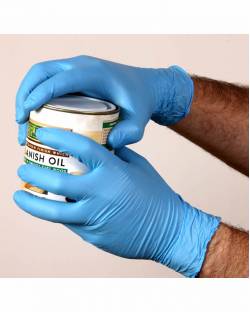Nitrile Sensor Touch Powder Free
- Product Code:
- MDNST
- Brand:
- Esko
$17.60 Including Gst
| Order Quantity | Price Per Item |
|---|---|
| 10 or more | $10.50 |
| ◃DISCOUNT TABLE▹ | |||
| Spend Over | $200 | $500 | $1,000 |
| Pay Only (+gst) | $14.55 | $14.16 | $13.78 |
Please call to check availability prior to ordering.
- Non latex, powder-free high quality nitrile rubber, tailored fit
- Industrial/medical grade, FDA approved
- Excellent chemical and oil resistance
- Puncture and abrasion resistant
- 100% nitrile rubber—very skin friendly
- Textured non-slip grip
- Produced to EN and FDA medical and food processing standards
- 3g lightweight economical choice
- 100pc/box
EN 420:03+A1:09 General requirements for protective gloves.
EN 1186 Glass/fork symbol gives traceability and identification of materials intended to come into contact with food. Confirms that these products will not contaminate food with hazardous substances.
EN 455-1 Defines requirements for disposable gloves to check they are free of holes to be safe for medical use.
EN 455-2 Defines requirements for sizing and strength of disposable gloves for medical use.
FDA 21 Overarching regulations for production, testing, labelling and advertising of food and drugs within the United States.
CFR 177.2600 Rubber articles intended for repeated use—lists permitted elastomers, vulcanization materials, accelerators, retarders, activators, antioxidants, plasticizers, fillers, emulsifiers, and other additives, and sets extraction limits for food contact.
EN 374-1 Indicates that the product meets permeation standards for protective gloves, with permeation resistance of (Type A) at least 30 minutes to 6 test chemicals, (Type B) at least 30 minutes to 3 chemicals and (Type C) at least 10 minutes to 1 chemical. Letters under the shield identify the chemicals.
EN 374-2 Indicates that the product meets penetration standards for protective gloves, against penetration by dangerous chemicals and micro-organisms. A sample glove shall not leak water or air when tested for closures, porosity, seams, pinholes, leaks or imperfections of the glove by either inflating with air or filling with water.
EN 374-3:2003 - now EN 16523-1 Indicates that the product meets standards for protective gloves against chemicals and micro-organisms in conditions of continuous contact. The glove is exposed to a test chemical in a two-part laboratory cell.
EN 374-4 Measures the glove’s resistance to degradation by chemical exposure—any flaking, swelling, disintegration, embrittlement, hardening, softening, etc—by testing the force required to puncture the glove material after continuous contact with a challenge chemical.





